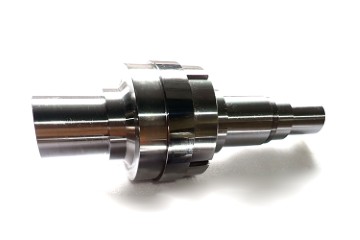Wire Cut EDM vs EDM: Key Differences & Machine Types Explained
Discover the difference between wire cut EDM and EDM machines. Learn about wire cutting, through holes, blind holes, and which EDM type suits your needs.
Electrical discharge machining (EDM) can be used to process through holes and blind holes, while Wire Electrical Discharge Machining (Wire EDM) is primarily used for machining through holes and small holes with linear profiles. EDM is especially suitable for machining parts with complex shapes, mold cavities, as well as engraving text, patterns, etc. Wire-cut EDM is particularly well-suited for processing narrow slits with complex shapes and various intricately shaped parts. They are both advanced manufacturing technologies that utilize electrical discharges to machine materials, typically metals, that are electrically conductive. Despite their similar underlying principles, the two techniques differ significantly in their operational methods, applications, and outcomes. Understanding these differences is crucial for selecting the appropriate EDM technology for specific manufacturing tasks.
1. Technical Principles and Processing Methods
Electrical Discharge Machining (EDM):
- How It Works: EDM involves an electrode that is carefully shaped to match the negative contour of the part to be machined. The electrode and the workpiece are submerged in a dielectric fluid, and a voltage is applied which creates sparks between the electrode and the workpiece. The sparks erode the workpiece to form the desired shape.
- Applications: Ideal for creating complex geometries, deep cavities, and intricate details on hard metals that would be difficult to machine with traditional techniques.
Wire Electrical Discharge Machining (Wire EDM):
- How It Works: Wire EDM uses a thin, continuously moving wire as an electrode which is fed through the workpiece to cut material away. Similar to EDM, the cutting process occurs under a stream of dielectric fluid with electrical discharges between the wire and the workpiece.
- Applications: Primarily used for cutting plates as thick as 300 mm and creating intricate patterns and shapes. It is especially useful for projects requiring high levels of accuracy and precision.
2. Comparison of Technical Features
Common Features:
- Precision and Efficiency: Both EDM types can achieve high precision and are capable of machining complex parts efficiently.
- Material Compatibility: They are suitable for processing various conductive materials, including hardened steel, titanium, and alloys.

Low-price custom solutions. Our factory business includes designing, developing, and manufacturing powder metallurgy moulds, carbide parts, powder injection moulds, stamping toolings and precision mould parts.
WhatsApp: +86 186 3895 1317 Email: [email protected]
Distinct Features:
- Electrode Usage:
- EDM: Requires custom-made electrodes for each application, which can be costly and time-consuming to produce.
- Wire EDM: Utilizes a standard wire, making it easier and quicker to set up for new cuts.
- Processing Capabilities:
- EDM: Best suited for depth and complex cavities but less efficient for through-hole drilling.
- Wire EDM: Excellently suited for creating intricate contours and through-holes with precision.
- Electrode Wear:
- EDM: The electrode can wear out, which might affect the dimensional accuracy of the workpiece.
- Wire EDM: The wire electrode is continuously moving, which minimizes wear and ensures consistent accuracy.
- Application Suitability:
- EDM: Preferred for molds, dies, and other components with complex geometries.
- Wire EDM: Ideal for parts requiring fine details, specific angles, and sharp internal corners like extrusion dies and splitter plates.
Conclusion
Both EDM and Wire EDM offer unique advantages and are tailored to different types of manufacturing needs. EDM is unparalleled in machining complex shapes and deep cavities with high precision. In contrast, Wire EDM is the method of choice for detailed cuts and fine features without requiring a custom electrode for each shape, thus providing greater flexibility and efficiency.
As manufacturing continues to evolve with the integration of automation and AI, the future application prospects for both EDM types look promising. They are likely to see increased use in prototyping, tool-making, and micro-machining fields, where precision and material integrity are paramount. Your experiences and insights about these technologies can further enrich our understanding and application in diverse manufacturing settings.









